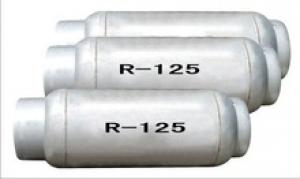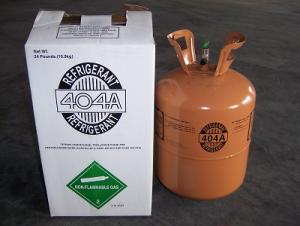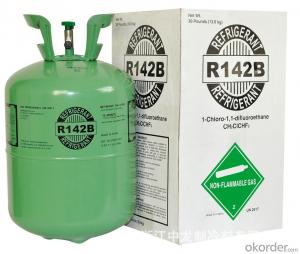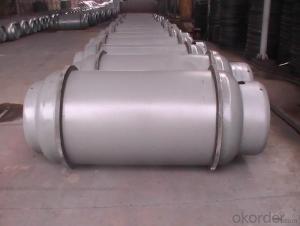Blend Refrigerant R410a
- Loading Port:
- Shanghai
- Payment Terms:
- TT OR LC
- Min Order Qty:
- -
- Supply Capability:
- 1000MT m.t./month
OKorder Service Pledge
Quality Product, Order Online Tracking, Timely Delivery
OKorder Financial Service
Credit Rating, Credit Services, Credit Purchasing
You Might Also Like
Specifications
mixed refrigerant R410a
Applications:Air Conditioning Units,Heat Pumps,Cold Storage
Industrial and Commercial Refrigeration
mixed refrigerant R410A
| Applications: |
| Air Conditioning Units Heat Pumps Cold Storage Industrial and Commercial Refrigeration |
| Physical Properties: |
| Chemical Name: Difluoromethane/Pentafluoroethane R32/R125 Molecular Weight: 72.6 kg/kmol Boiling Point at 1.013 bar: -51.5oC Critical Temperature: 71.8oC Critical Pressure: 48.9 bar Density Liquid at 25oC: 1068 kg/m3 Lubricant: Polyol Ester |
| Pack Sizes: |
| ISO tanks and disposable cylinders |
- Q: What is the isomeric structure of oxygen-containing derivatives?
- Play the Transformers. As long as the same molecular formula, you can group out how many different structures, there are a number of isomers.
- Q: Organic organic compounds are organic matter?
- Organic matter is defined as the presence of hydrocarbons and their derivatives, and the presence of covalent bonds is a feature of them.
- Q: What is the relationship between hydrocarbon and hydrocarbon derivatives?
- Hydrocarbons, which are composed of two elements, carbon and hydrogen, are called hydrocarbons and hydrocarbons. It reacts with chlorine, bromine vapor, oxygen, etc. to produce hydrocarbons.
- Q: Will AsH3 (arsenic trioxide) is organic or inorganic
- AsH3 (arsine trihydride) is not containing C element
- Q: The role of aromatic hydrocarbons
- Two cases: First, the name of monocyclic aromatic hydrocarbons, usually benzene ring for the mother, alkyl as a substituent. Second, the structure is more complex aromatic hydrocarbons, usually based on the hydrocarbon base, benzene ring as a substituent. Xylene, 2-methyl-3-phenylpentane, diphenylmethane, etc. For the naming of multifunctional compounds, attention is given to the priority order of the functional groups. The priority is preceded by the parent, usually: cations, COOH SO2H, COOR, COCl, CONH2, CN, CHO, CO, OH, SH, NH2, alkynes, alkenes, ethers, X, NO2, etc. [2]
- Q: What is the current status of carbon dioxide capture technology and how is it compared to plants that absorb carbon dioxide?
- I think it 's harder if the thing is to be industrialized. = Such as carbon dioxide hydrogenation into methane, after the methane transport or storage is also a relatively large problem bars And not to say that the hydrogenation of carbon dioxide into methane has been studied for a long time, but it does not seem to have developed any big news like ah There is also electrochemical reduction of carbon dioxide. It is relatively easy to produce formic acid in the aqueous phase, such as the Partially oxidized atomic cobalt oxide for carbon dioxide electroreduction to liquid fuel (Nature: Nature Publishing Group) recently made by Xie Yi. The But the separation of formic acid and water is also a more difficult thing ah. The
- Q: Inorganic chemistry employment direction? Current research direction
- Inorganic chemistry is the science of the composition, nature, structure and reaction of inorganic matter, which is the oldest branch of chemistry. Inorganic substances include all chemical elements and their compounds, except for most of the carbon compounds. (In addition to carbon dioxide, carbon monoxide, carbon disulfide, carbonates and other simple carbon compounds are still inorganic substances, the rest are organic matter.)
- Q: Other corals are because the color of the corals show colorful, why only the red coral is the exception of it? did not find the reasons for the big god to explain
- Red coral is not absorbed red, so it looks red.
- Q: Is grease a polymer compound? Is it a derivative of saturated hydrocarbons?
- Not a polymer can not be considered a saturated hydrocarbon derivatives. Natural oils contain unsaturated structures
- Q: Junior high school chemistry knowledge, please explain what is organic compounds, inorganic compounds.
- 4. A wide variety of organic matter, hydrocarbons and hydrocarbons can be divided into two major categories of derivatives. According to the organic groups contained in the functional groups, divided into alkanes, alkenes, alkynes, aromatic hydrocarbons and alcohols, aldehydes, carboxylic acids, esters and so on. According to the organic carbon molecular structure, can also be divided into open chain compounds, carbocyclic compounds and heterocyclic compounds three categories.
Send your message to us
Blend Refrigerant R410a
- Loading Port:
- Shanghai
- Payment Terms:
- TT OR LC
- Min Order Qty:
- -
- Supply Capability:
- 1000MT m.t./month
OKorder Service Pledge
Quality Product, Order Online Tracking, Timely Delivery
OKorder Financial Service
Credit Rating, Credit Services, Credit Purchasing
Similar products
Hot products
Hot Searches






















